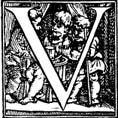
esalius, not one to leave details to coincidence, chose a name for his masterpiece that was laden with ideology. Understanding this title illuminates Vesalius’ beliefs and the circumstances under which he cultivated them.
By Daniel H. Garrison
In the first place, Latin fabrica is the regular word for “craft” or “art”. It may also mean “the manner of construction” or “workmanship”, and, by extension, “skillful production”, such as fabric or a building.
It thus comes laden with ideology. It implies the belief that human anatomy is a deliberate work of art, planned by a craftsman to be the perfect expression of a purpose. This had been Galen’s view and before him that of the Stoics, and even earlier that of Aristotle, who continually reminded his readers that “Nature does nothing in vain.”
Not only was this perfectly compatible with Christian belief, it conveyed the consensus of classical Greek and Roman thinking, and of Renaissance humanism, that nature is perfect and orderly.
No idea of chance or randomness could penetrate this consensus, which persisted until the 20th century. When confronted with Werner Heisenberg’s uncertainty principle, Albert Einstein remarked “Quantum mechanics is very imposing. But an inner voice tells me that it is not the real McCoy. The theory delivers a lot but hardly brings us closer to the secret of the Old One. I for one am convinced that He does not throw dice.”
To call anatomy a “fabric”, therefore, is a statement of belief in nature’s intelligent design. An often cited assertion of this belief is Cicero’s De natura deorum, where several passages articulate the Stoic doctrine. For example, Cicero describes breathing and the diffusion of blood through the body as an instance of “the incredible skilfulness of nature’s handiwork,” incredibilis fabrica naturae (2.138.5). A little earlier, he states “that man has been cared for by divine providence will be more readily understood if we survey the whole structure of man [tota hominis fabricatio] and all the conformation and perfection of human nature” (2.133.13).
Vesalius avoided any consistent claim about the identity of the designer, many times citing “Nature” and other times “God, the supreme maker of things” (summus rerum opifex Deus), “the Maker of things”, “the Maker”, “the infinite maker of things”, and so on, both with and without capitalization.
Because he was challenging so many articles of humanist faith, especially the belief that the mighty Galen was never wrong, Vesalius was especially careful to remind his readers that he believes in intelligent design and the providential skill of a creator, whether it was Nature or a Maker. There can be little doubt that he was perfectly sincere in restating this belief throughout the Fabrica.
The translation of Latin fabrica with its English cognate “fabric” is well within the meanings carried by our own word. The Oxford English Dictionary gives as its first meaning for fabric “A product of skilled workmanship.” There is no chance Vesalius was thinking of fabric in terms of textiles or the material of a ceramic article. His most important metaphor was that of a building, which is prominent among the literal meanings for “fabric” in the OED.
